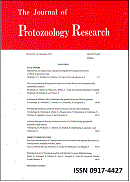8 巻, 4 号
選択された号の論文の10件中1~10を表示しています
- |<
- <
- 1
- >
- >|
-
1998 年 8 巻 4 号 p. 204-213
発行日: 1998年
公開日: 2021/04/30
PDF形式でダウンロード (2769K) -
1998 年 8 巻 4 号 p. 214-223
発行日: 1998年
公開日: 2021/04/30
PDF形式でダウンロード (3174K) -
1998 年 8 巻 4 号 p. 224-226
発行日: 1998年
公開日: 2021/04/30
PDF形式でダウンロード (885K) -
1998 年 8 巻 4 号 p. 227-232
発行日: 1998年
公開日: 2021/04/30
PDF形式でダウンロード (1784K) -
1998 年 8 巻 4 号 p. 233-240
発行日: 1998年
公開日: 2021/04/30
PDF形式でダウンロード (2611K) -
1998 年 8 巻 4 号 p. 241-248
発行日: 1998年
公開日: 2021/04/30
PDF形式でダウンロード (2447K) -
1998 年 8 巻 4 号 p. 249-252
発行日: 1998年
公開日: 2021/04/30
PDF形式でダウンロード (1028K) -
1998 年 8 巻 4 号 p. 253-257
発行日: 1998年
公開日: 2021/04/30
PDF形式でダウンロード (1522K) -
1998 年 8 巻 4 号 p. 258-262
発行日: 1998年
公開日: 2021/04/30
PDF形式でダウンロード (1529K) -
1998 年 8 巻 4 号 p. 263-273
発行日: 1998年
公開日: 2021/04/30
PDF形式でダウンロード (2354K)
- |<
- <
- 1
- >
- >|
